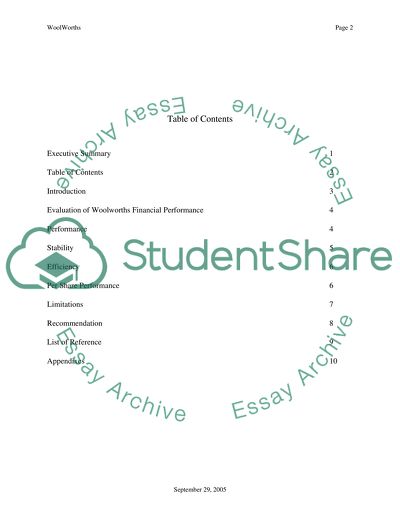Cite this document
(Financial Performance at Woolworths Limited Case Study - 1, n.d.)
Financial Performance at Woolworths Limited Case Study - 1. Retrieved from https://studentshare.org/finance-accounting/1535088-this-is-an-assignment-where-you-have-to-analyze-an-annual-report-do-some-calculations-and-write-a-report-about-your-findings-accounting
Financial Performance at Woolworths Limited Case Study - 1. Retrieved from https://studentshare.org/finance-accounting/1535088-this-is-an-assignment-where-you-have-to-analyze-an-annual-report-do-some-calculations-and-write-a-report-about-your-findings-accounting
(Financial Performance at Woolworths Limited Case Study - 1)
Financial Performance at Woolworths Limited Case Study - 1. https://studentshare.org/finance-accounting/1535088-this-is-an-assignment-where-you-have-to-analyze-an-annual-report-do-some-calculations-and-write-a-report-about-your-findings-accounting.
Financial Performance at Woolworths Limited Case Study - 1. https://studentshare.org/finance-accounting/1535088-this-is-an-assignment-where-you-have-to-analyze-an-annual-report-do-some-calculations-and-write-a-report-about-your-findings-accounting.
“Financial Performance at Woolworths Limited Case Study - 1”, n.d. https://studentshare.org/finance-accounting/1535088-this-is-an-assignment-where-you-have-to-analyze-an-annual-report-do-some-calculations-and-write-a-report-about-your-findings-accounting.


